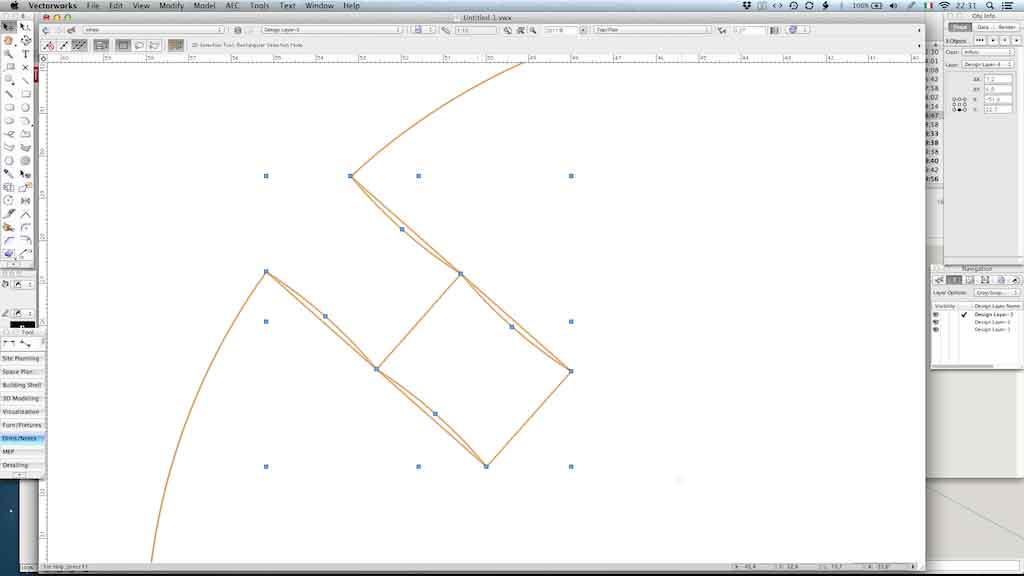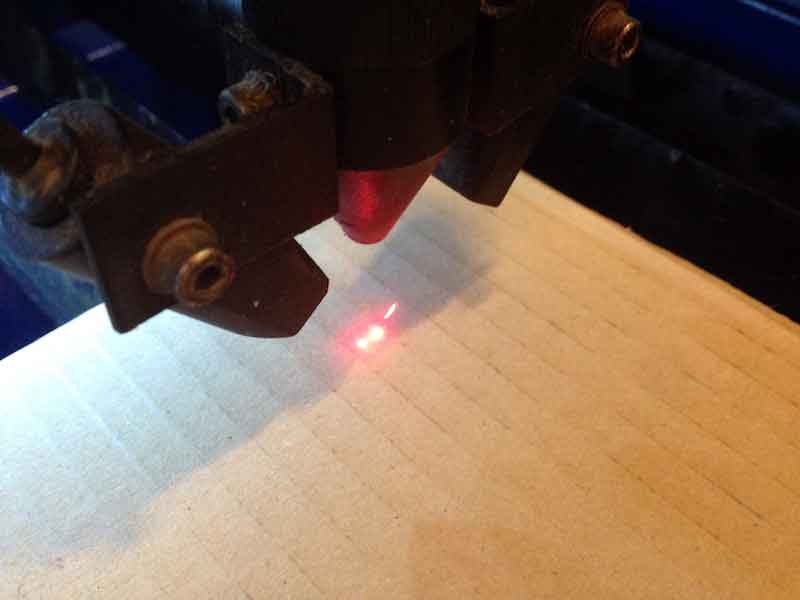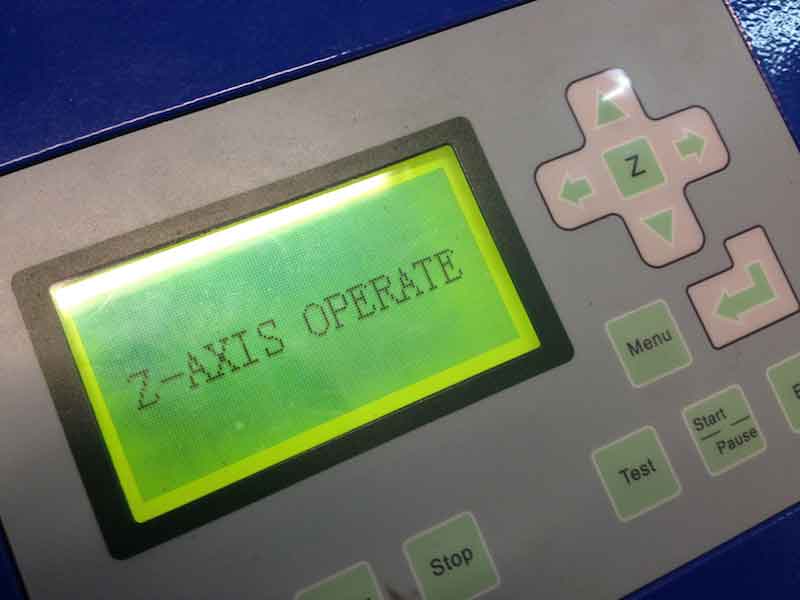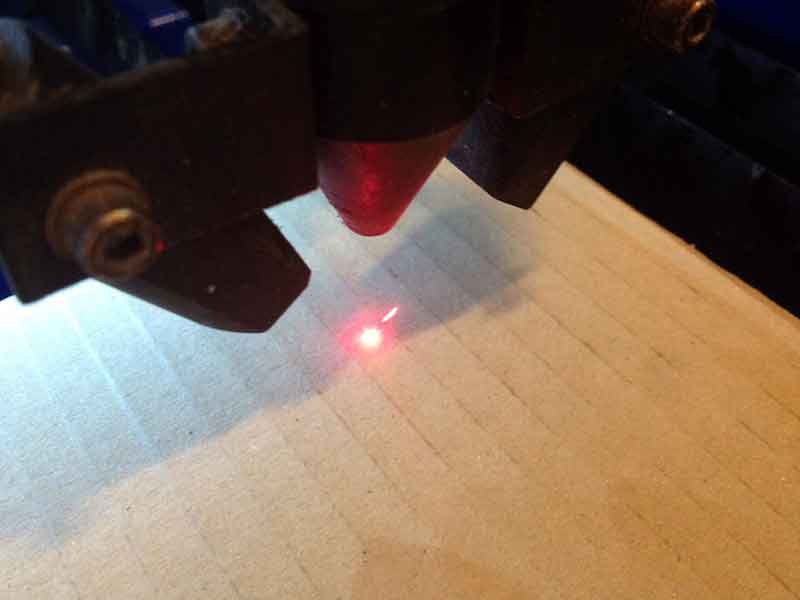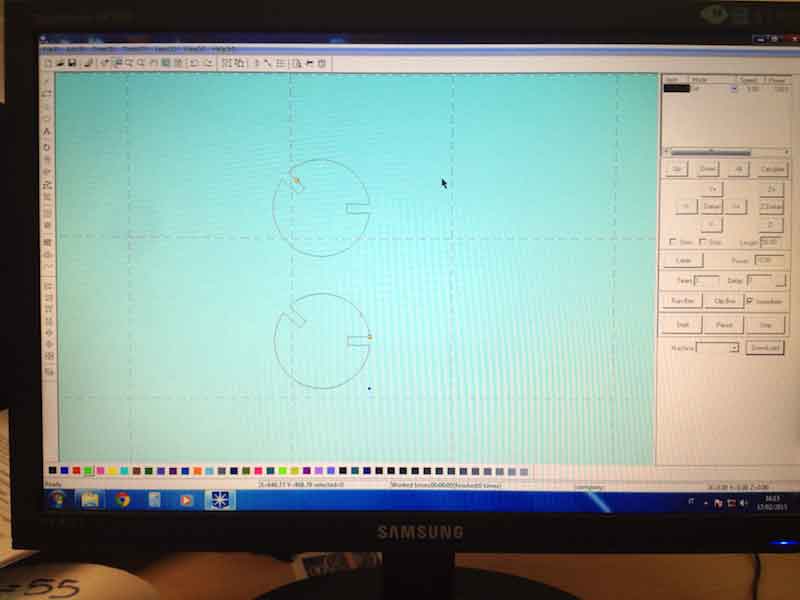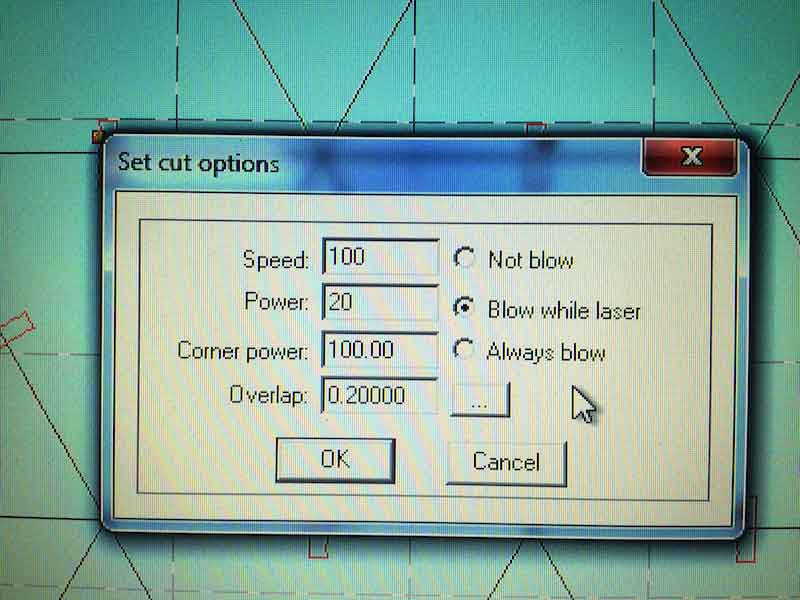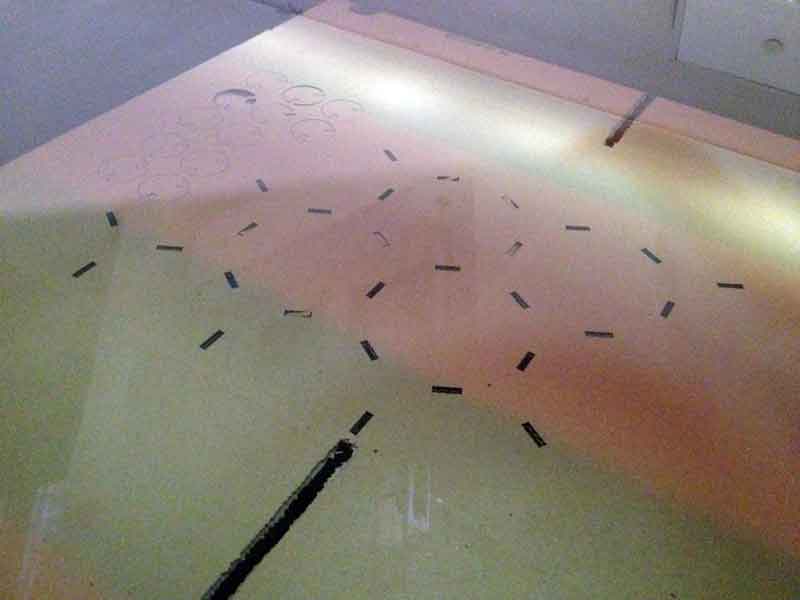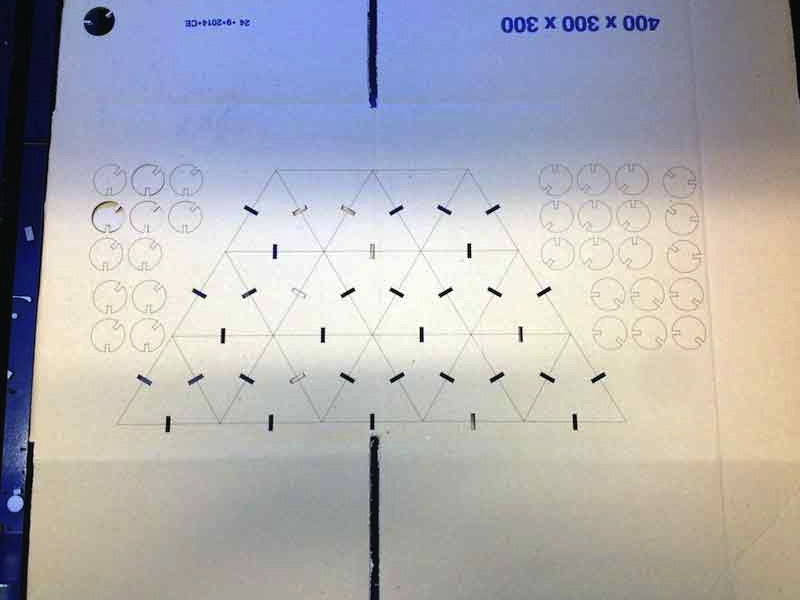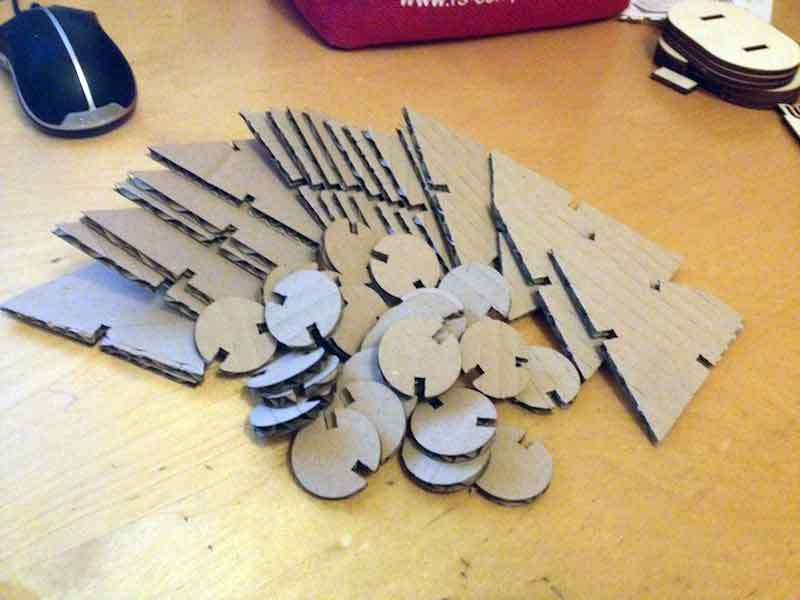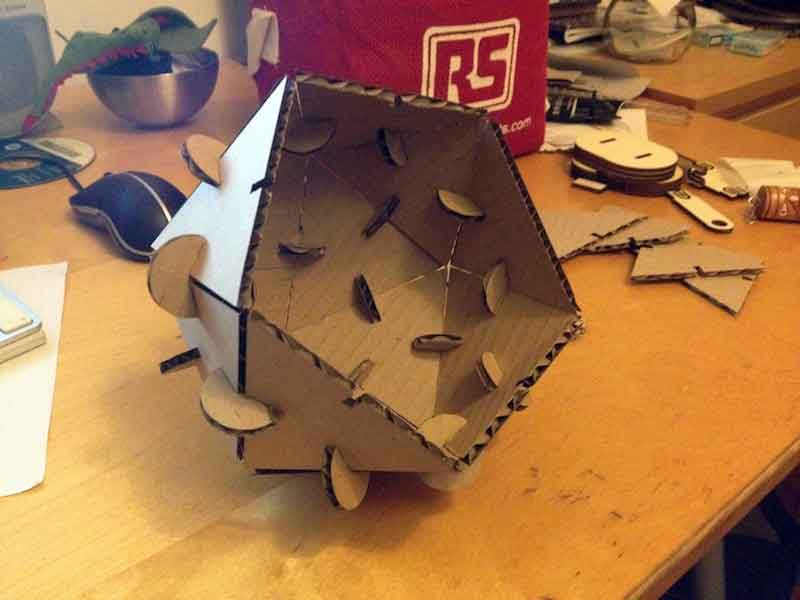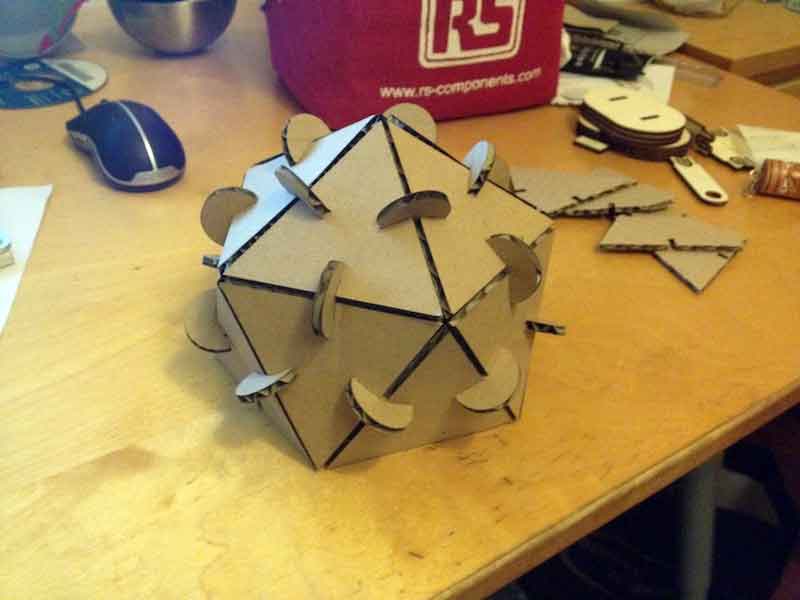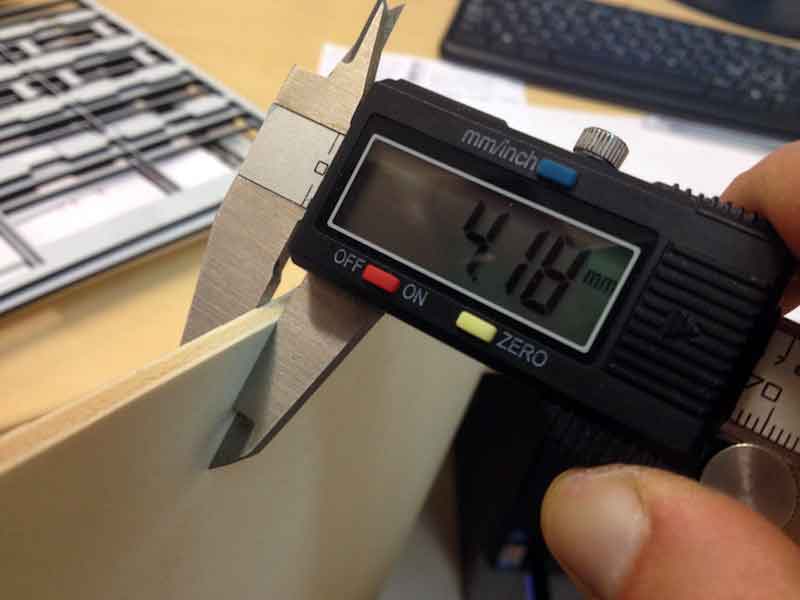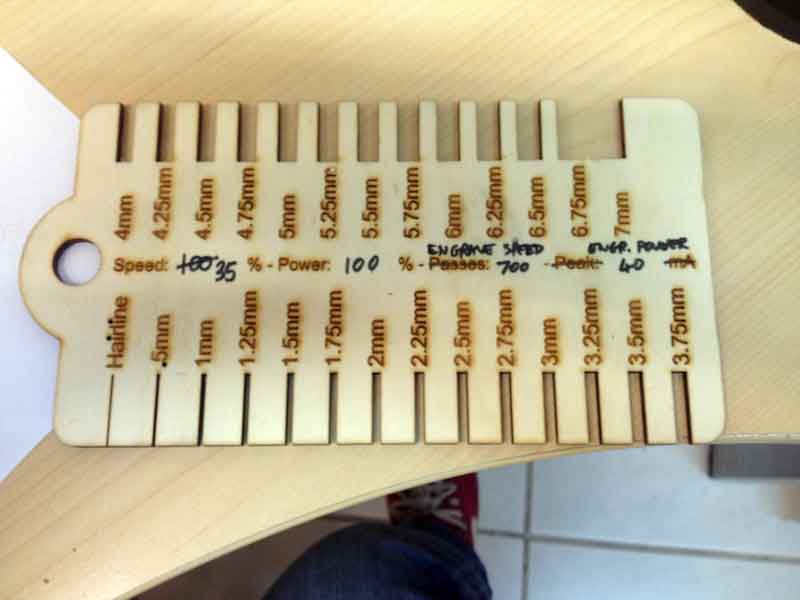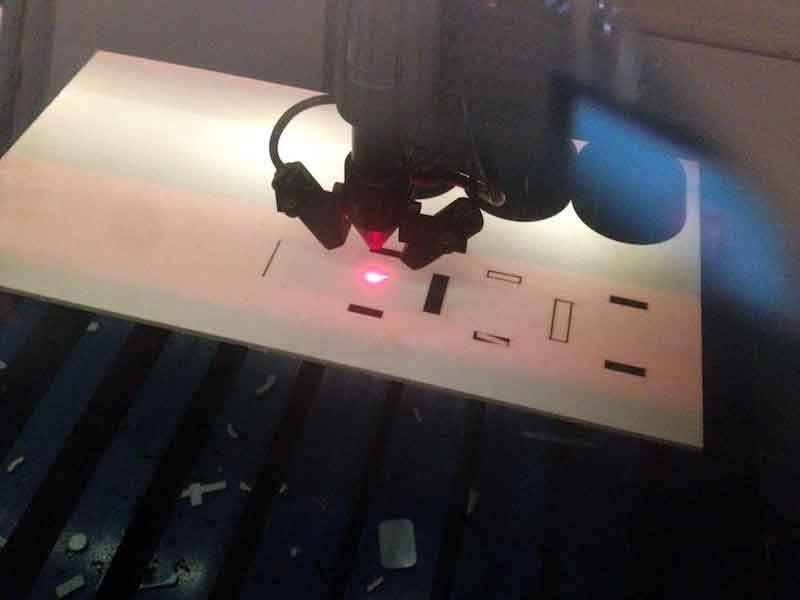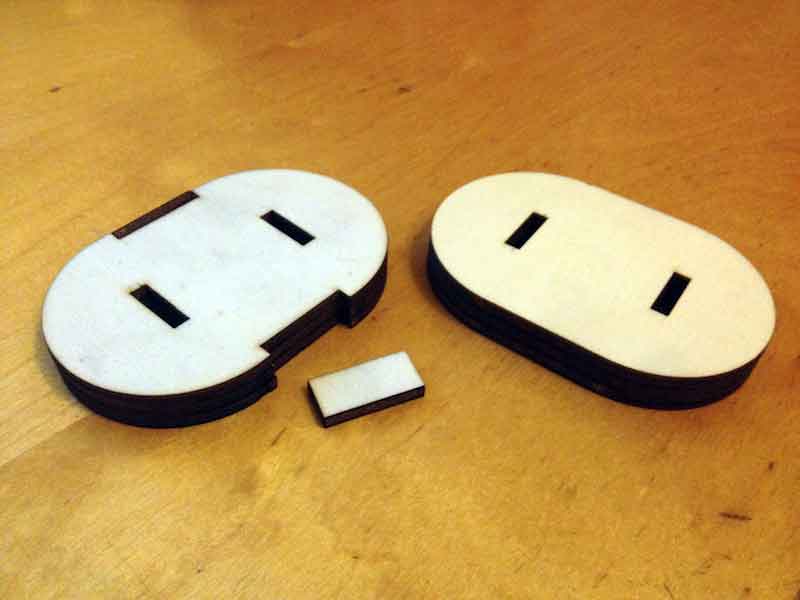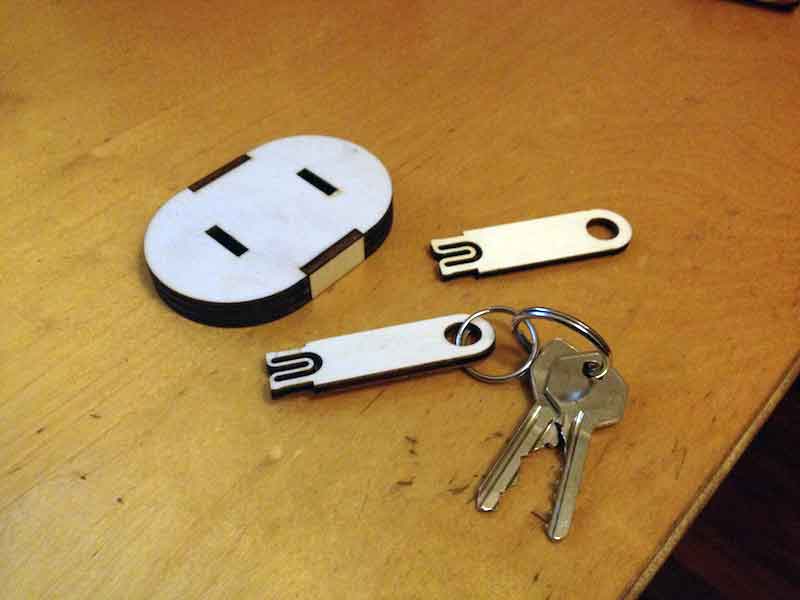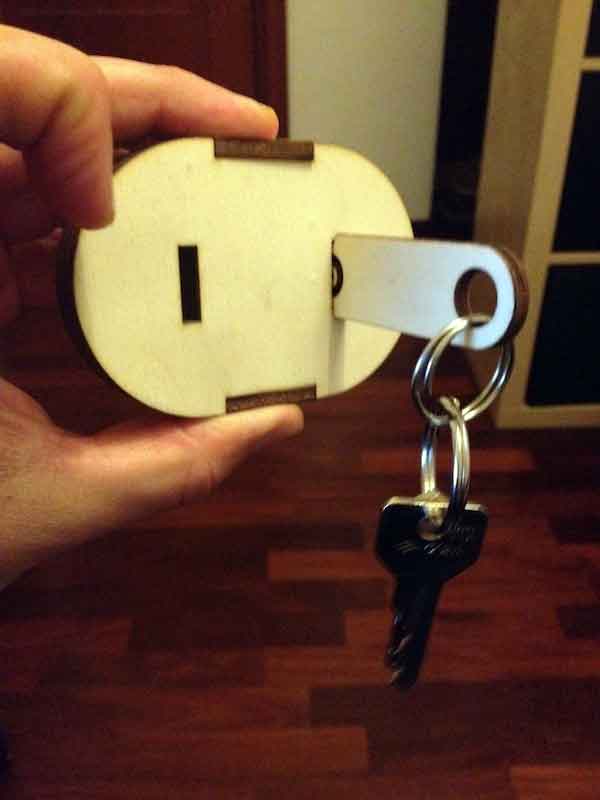WEEK 3
03. Computer-Controlled Cutting
Design, make, and document a press-fit construction kit
The first thing I did was to design a modular system. I first tried to build a dodecaedron, but then decided to use triangular faces. I designed the solid with sketchup and I found the right angle to which the anchor indents have to be set.
After I was sure everything would be ok in the 3D visualization I moved to Vectorworks to draw the cutting plans and decided to add two bumps inside the anchor indents to make the fix stronger. I wanted to use a 4,00 mm cardboard (I couldn't find high quality cardboard though) and I had to consider the kerf of my machine which is about 0,20 mm. So I made the indents 3,80 mm large.
Then I drew the cutting plan with speed in mind: the triangles are actually cut by one long polyline and the indents are separeted from the triangles. This way I could later set pryority of the cuts in the machine software.
I did many operations on the machine: First of all I set the focus on the material by acting over the Z axis. Then I gave different colors to different parts of the cutting plans, the inner cuts had to be cut first and the outer cuts where set to be cut last. The cut on cardboard had a speed of 100 and a power of 20 (the machine had a 100watt laser lamp)
The modular system was a success, it was easy to fit and strong. I used it to make a bowl for my small cactus.
Plywood snug fit
I also had an idea about a removable snug fit. As me and my classmate Mattia Ciurnelli moved in Milan from Rome and Perugia, we are now living in a small apartments, We always lost our keys when we come back home, so I designed this Key holder that has a plate made of three layers of 4,00mm wood with two holes and a plug that act as a keyring. When you are at home you plug the key on the plate (which will be attached to the door) and when you go out you can remove the plug and take it with you. I designed the snug fit to be strong, elastic and nice to see.
As with the cardboard I first measured the wood, then I used a kerf meter to see the right measure the design should have to ensure a nice fit. First I made the plate without any fit system and the trhee layers were too lose, so I added two indents. As before I planned the inner cuts to be cut first. At the end the result is very good and the plug is pretty strong but easy to remove.
Vinyl Cutter
The vinyl cutter is such an easy and versatile machine to work with. It also has an astonishing high speed. I designed a little logo for a sticker I could use as a counter of how many flat tires I have on my bike. Everytime you got a flat and change or repair the tube you add a sticker to your wheel.
All files are available here:

